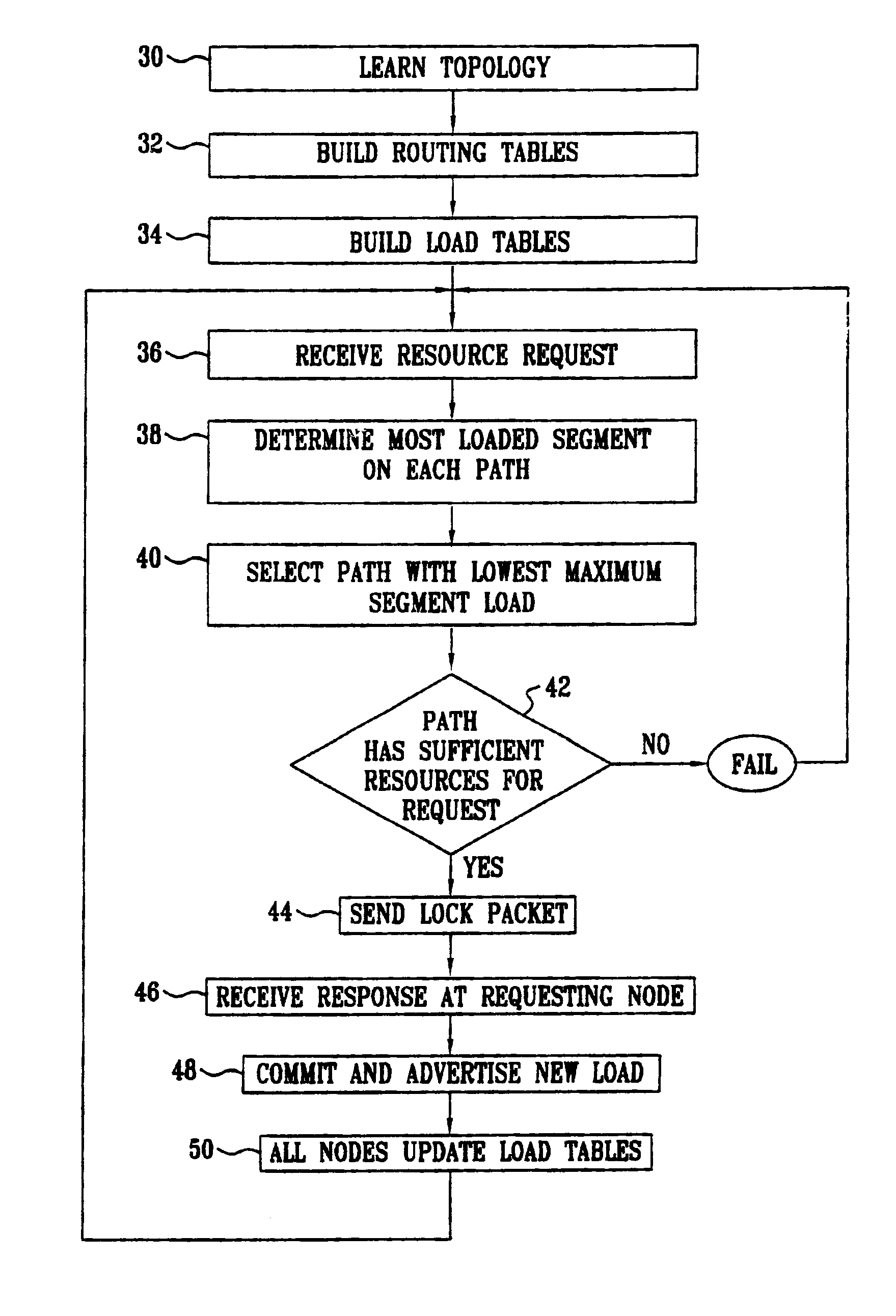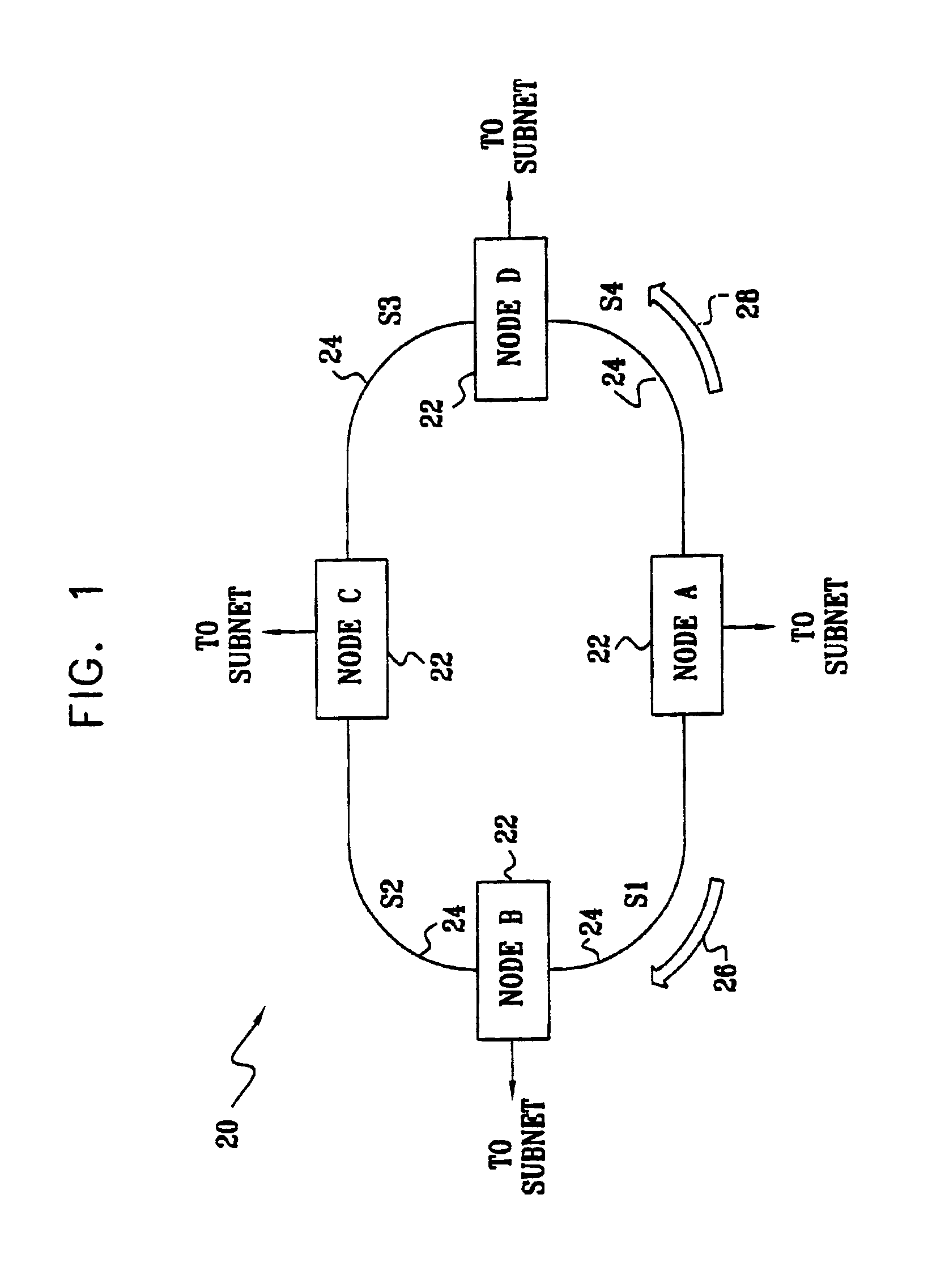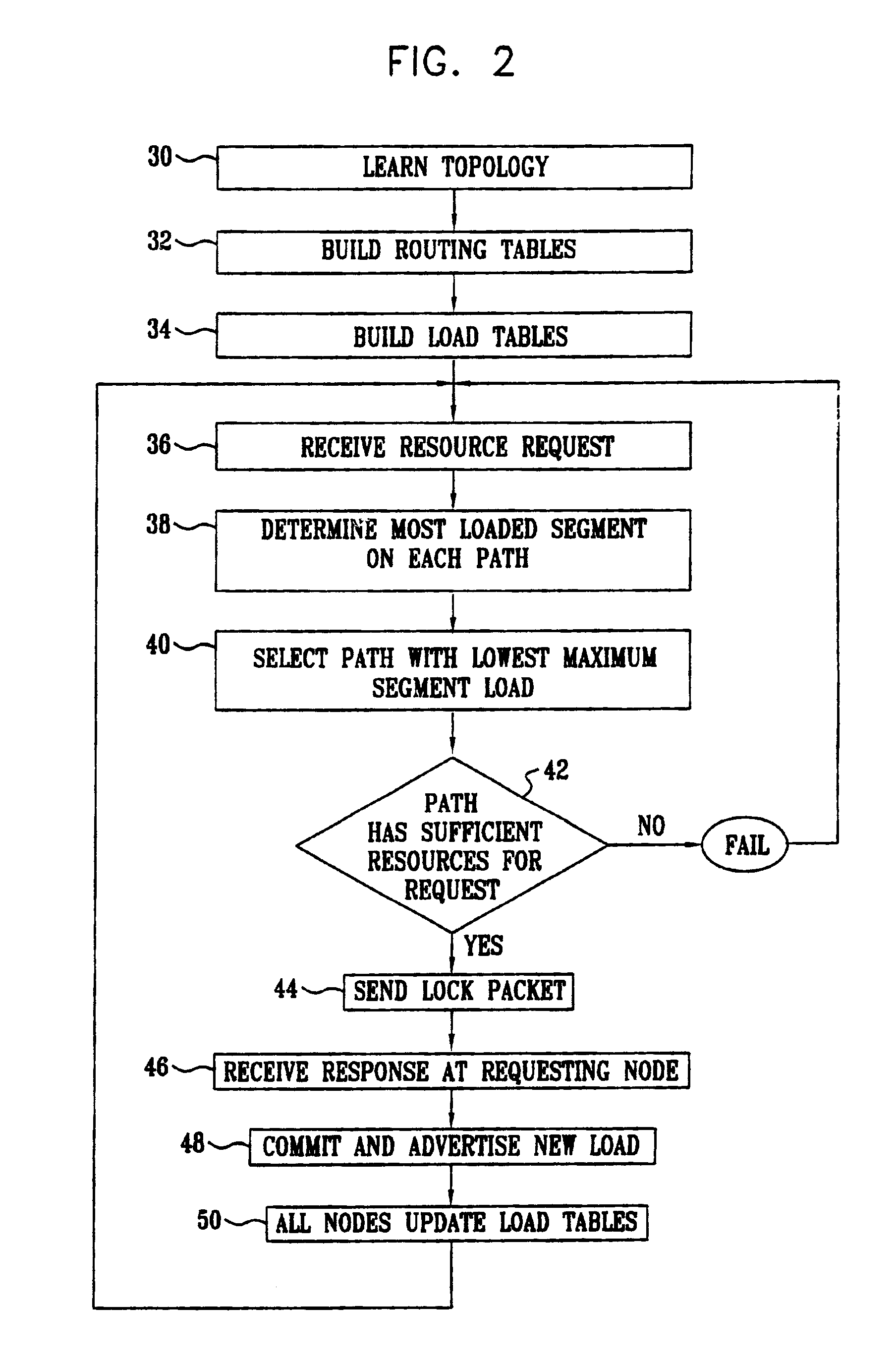Resource reservation in a ring network
a resource reservation and ring network technology, applied in the field of communication networks, can solve the problems of node selection method, protocol does not provide any means or basis for automatically updating costs,
- Summary
- Abstract
- Description
- Claims
- Application Information
AI Technical Summary
Benefits of technology
Problems solved by technology
Method used
Image
Examples
Embodiment Construction
[0030]FIG. 1 is a block diagram that schematically illustrates an IP ring network 20, in accordance with a preferred embodiment of the present invention. Network 20 comprises nodes 22, which are connected by links 24 labeled S1 through S4. Each node can communicate with every other node over either a clockwise ring 26 or a counterclockwise ring 28 around the ring, indicated respectively by arrows adjacent to node A. Following SRP convention, these two paths are identified respectively as an outer ring and an inner ring, each of which is made up of ring segments corresponding to the physical links between the nodes. Typically, each of the nodes also links the ring to a respective subnet, which may be of substantially any topology known in the art. When node A, for example, receives a data flow from its respective subnet, which is destined for the subnet of node C, node A determines whether to transmit the flow over ring 26 or ring 28, using the method described hereinbelow.
[0031]FIG....
PUM
 Login to View More
Login to View More Abstract
Description
Claims
Application Information
 Login to View More
Login to View More - R&D
- Intellectual Property
- Life Sciences
- Materials
- Tech Scout
- Unparalleled Data Quality
- Higher Quality Content
- 60% Fewer Hallucinations
Browse by: Latest US Patents, China's latest patents, Technical Efficacy Thesaurus, Application Domain, Technology Topic, Popular Technical Reports.
© 2025 PatSnap. All rights reserved.Legal|Privacy policy|Modern Slavery Act Transparency Statement|Sitemap|About US| Contact US: help@patsnap.com



